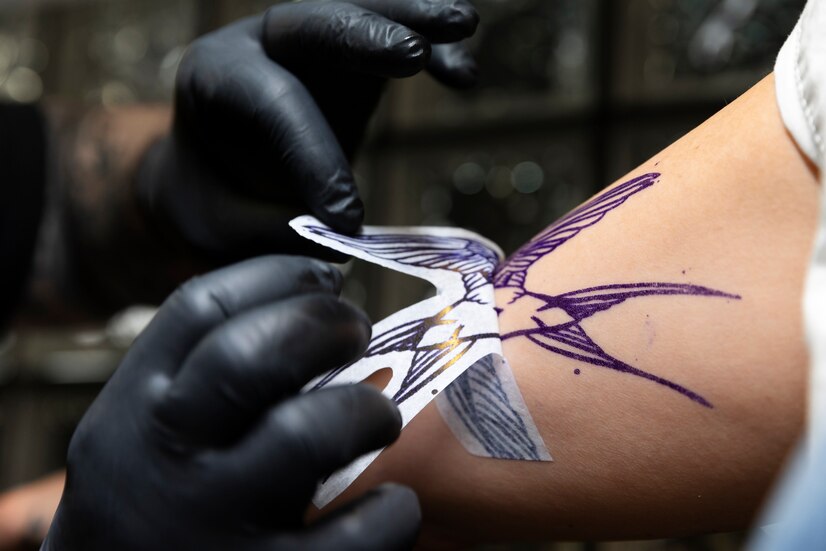In recent years, the world of tattoo artistry has witnessed a remarkable evolution, spurred by the intersection of technology and creative expression. This evolution has given rise to a fascinating trend: digital tattoo design.
As technology continues to advance, tattoo artists and enthusiasts are embracing digital tools, including specialized tattoo designing software, to enhance the tattooing process, from conceptualization to execution.
This article delves into the burgeoning realm of digital tattoo design, exploring how technology is reshaping the landscape of body art.
Evolution of Tattoo Design
Tattooing, once reliant on traditional ink and paper sketches, has undergone a significant transformation with the advent of digital technology.
While hand-drawn sketches and stencils remain integral to the tattooing process, digital tools have revolutionized the way designs are conceived and realized.
Specialized tattoo designing software offers tattoo artists a versatile platform for sketching, coloring, and refining their ideas, providing a digital canvas that empowers creativity in unprecedented ways.
The Role of Tattoo Designing Software
Tattoo designing software plays a pivotal role in every stage of the tattoo design process. These advanced tools offer a range of features and functionalities tailored specifically to the needs of tattoo artists.
From intuitive drawing interfaces to extensive libraries of design elements and fonts, tattoo designing software provides artists with the resources they need to bring their creative visions to life.
One of the most significant advantages of tattoo designing software is its ability to facilitate collaboration between artists and clients. Through virtual consultations and online platforms, clients can communicate their ideas and preferences to artists, who can then translate them into stunning digital mock-ups using the software.
This interactive process allows for greater customization and ensures that clients are fully satisfied with the end result.
Augmented Reality and Virtual Reality
Augmented reality (AR) and virtual reality (VR) technologies are also making waves in the world of tattoo design, seamlessly integrated into specialized tattoo designing software. These immersive technologies enable clients to visualize their tattoo designs in real-time, providing a preview of how the artwork will look on their bodies.
AR apps allow users to superimpose digital tattoos onto their skin using their smartphones or tablets, while VR platforms offer a more immersive experience, allowing users to explore virtual tattoo galleries and interact with 3D models of designs.
By leveraging AR and VR technologies, tattoo artists can offer their clients a more engaging and interactive design experience.
Clients can experiment with different designs, placements, and sizes, helping them make more informed decisions before committing to a permanent tattoo. This technology-driven approach enhances the overall tattooing experience and fosters greater collaboration between artists and clients.
Digital Tattoo Machines
In addition to specialized software, the tattooing process itself has been revolutionized by digital technology, including digital tattoo machines. These innovative devices offer artists greater precision, control, and efficiency compared to traditional coil machines.
Equipped with digital controls and advanced motors, digital tattoo machines deliver consistent and precise needle movements, resulting in smoother lines and finer details.
Digital tattoo machines also allow artists to adjust needle speed, depth, and pressure, giving them unprecedented control over the tattooing process. This level of customization ensures optimal results for each client, regardless of their skin type or sensitivity.
Furthermore, digital machines are quieter and produce less vibration than traditional coil machines, creating a more comfortable experience for both the artist and the client.
Challenges and Considerations
While digital tattoo design offers numerous benefits, it also presents unique challenges and considerations for artists and enthusiasts alike. One concern is the potential for overreliance on digital tools, which may detract from the tactile and intuitive aspects of traditional tattooing.
Some artists worry that the convenience of digital technology may lead to a homogenization of tattoo designs, as artists rely on pre-made templates and digital effects rather than honing their own artistic skills.
Additionally, there are ethical considerations surrounding the use of augmented reality and virtual reality in tattoo design. While these technologies offer exciting possibilities for visualizing tattoo designs, they also raise questions about consent and cultural appropriation.
It is essential for artists to approach the use of AR and VR with sensitivity and respect for the cultural significance of tattooing in different communities.
Conclusion
The rise of digital tattoo design, facilitated by specialized tattoo designing software and innovative technologies, represents a fascinating fusion of technology and body art. From sophisticated design tools to immersive augmented reality experiences, technology has opened up new possibilities for artists and clients alike.
While digital tools offer undeniable advantages in terms of precision and customization, it is essential for artists to strike a balance between embracing technology and preserving the integrity of traditional tattooing practices.
As technology continues to evolve, so too will the world of tattoo artistry. By embracing digital innovation while honoring the rich history and cultural significance of tattooing, artists can ensure that the art form remains vibrant and relevant in the digital age.
As technology continues to advance, tattoo artists and enthusiasts are embracing digital tools, including specialized tattoo designing software, to enhance the tattooing process, from conceptualization to execution.
This article delves into the burgeoning realm of digital tattoo design, exploring how technology is reshaping the landscape of body art.
Evolution of Tattoo Design
Tattooing, once reliant on traditional ink and paper sketches, has undergone a significant transformation with the advent of digital technology.
While hand-drawn sketches and stencils remain integral to the tattooing process, digital tools have revolutionized the way designs are conceived and realized.
Specialized tattoo designing software offers tattoo artists a versatile platform for sketching, coloring, and refining their ideas, providing a digital canvas that empowers creativity in unprecedented ways.
The Role of Tattoo Designing Software
Tattoo designing software plays a pivotal role in every stage of the tattoo design process. These advanced tools offer a range of features and functionalities tailored specifically to the needs of tattoo artists.
From intuitive drawing interfaces to extensive libraries of design elements and fonts, tattoo designing software provides artists with the resources they need to bring their creative visions to life.
One of the most significant advantages of tattoo designing software is its ability to facilitate collaboration between artists and clients. Through virtual consultations and online platforms, clients can communicate their ideas and preferences to artists, who can then translate them into stunning digital mock-ups using the software.
This interactive process allows for greater customization and ensures that clients are fully satisfied with the end result.
Augmented Reality and Virtual Reality
Augmented reality (AR) and virtual reality (VR) technologies are also making waves in the world of tattoo design, seamlessly integrated into specialized tattoo designing software. These immersive technologies enable clients to visualize their tattoo designs in real-time, providing a preview of how the artwork will look on their bodies.
AR apps allow users to superimpose digital tattoos onto their skin using their smartphones or tablets, while VR platforms offer a more immersive experience, allowing users to explore virtual tattoo galleries and interact with 3D models of designs.
By leveraging AR and VR technologies, tattoo artists can offer their clients a more engaging and interactive design experience.
Clients can experiment with different designs, placements, and sizes, helping them make more informed decisions before committing to a permanent tattoo. This technology-driven approach enhances the overall tattooing experience and fosters greater collaboration between artists and clients.
Digital Tattoo Machines
In addition to specialized software, the tattooing process itself has been revolutionized by digital technology, including digital tattoo machines. These innovative devices offer artists greater precision, control, and efficiency compared to traditional coil machines.
Equipped with digital controls and advanced motors, digital tattoo machines deliver consistent and precise needle movements, resulting in smoother lines and finer details.
Digital tattoo machines also allow artists to adjust needle speed, depth, and pressure, giving them unprecedented control over the tattooing process. This level of customization ensures optimal results for each client, regardless of their skin type or sensitivity.
Furthermore, digital machines are quieter and produce less vibration than traditional coil machines, creating a more comfortable experience for both the artist and the client.
Challenges and Considerations
While digital tattoo design offers numerous benefits, it also presents unique challenges and considerations for artists and enthusiasts alike. One concern is the potential for overreliance on digital tools, which may detract from the tactile and intuitive aspects of traditional tattooing.
Some artists worry that the convenience of digital technology may lead to a homogenization of tattoo designs, as artists rely on pre-made templates and digital effects rather than honing their own artistic skills.
Additionally, there are ethical considerations surrounding the use of augmented reality and virtual reality in tattoo design. While these technologies offer exciting possibilities for visualizing tattoo designs, they also raise questions about consent and cultural appropriation.
It is essential for artists to approach the use of AR and VR with sensitivity and respect for the cultural significance of tattooing in different communities.
Conclusion
The rise of digital tattoo design, facilitated by specialized tattoo designing software and innovative technologies, represents a fascinating fusion of technology and body art. From sophisticated design tools to immersive augmented reality experiences, technology has opened up new possibilities for artists and clients alike.
While digital tools offer undeniable advantages in terms of precision and customization, it is essential for artists to strike a balance between embracing technology and preserving the integrity of traditional tattooing practices.
As technology continues to evolve, so too will the world of tattoo artistry. By embracing digital innovation while honoring the rich history and cultural significance of tattooing, artists can ensure that the art form remains vibrant and relevant in the digital age.




